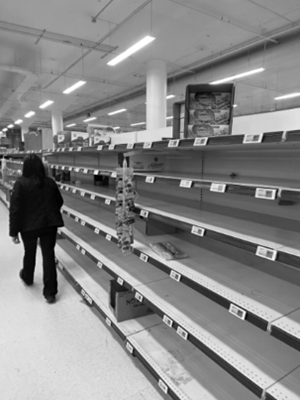While we can point to a plethora of underlying triggers forming the “perfect storm” (Covid 19, Russia/Ukraine, Oil Cartels, Highly Polarized World Politics, etc.), the recent supply chain crisis resulting in shortages and rising prices is fundamentally due to the fact that we have collectively become so good at driving time and cost out of the supply chain.
We moved from a model where stockpiles of inventory resided along the raw materials to consumer delivery pipeline (making it flexible and resilient). Raw materials producers held inventory to hedge price indexes. Manufacturers held inventory to assure production capacity. Wholesale distributors held inventory to serve their customers whose forecasts and sales were uncertain. Global sourcing of low-priced products (with a 30-day on water transportation requirement) further contributed to the need for large buckets of inventory along the supply chain. Retailers held inventory on their store floors and stockrooms. For decades, the supply chain was simply “sloppy” as part of the status quo.
Enter the ability in recent years to analyze “big data” in conjunction with powerful new supply chain optimization resources (tools, techniques, advisory companies, consultants, engineers, and business analysts) aimed at optimizing the supply chain and moving to a “just-in-time” model.
As a consequence of becoming so incredibly efficient with demand planning, production scheduling, manufacturing, warehousing, distribution, and next-day fulfillment, we collectively removed the buffers in the system making it intolerant of unforeseen consumption changes. We made it so perfectly tuned and so lean that it simply broke under the pressure of a volatile supply chain demand vs. supply swings.
As a result of the Supply Chain Pain™ of recent years, many clients are exploring opportunities to become more flexible and resilient in their supply chain. Some of the areas of interest include those listed below. Not all are the right solution for every business model and the unique circumstances of each company. Finding the balance between efficiency, flexibility, service, cost, and risk requires a detailed analysis to include subject matter experts in business modeling, supply chain engineering, sales and marketing, purchasing, finance and other disciplines (internal/external).
- Artificial Intelligence (AI), simulation and predictive analysis – leveraging data to hone supply chain efficacy
- Risk analysis, resiliency, and business disruption/continuity planning
- Localizing (de-globalizing) sourcing to compress supplier lead times
- Applying mechanization/automation/data systems to combat labor shortage and rising labor costs including, but not limited to these examples:
- Goods-to-Person Systems
- Autonomous Mobile Robots (AMRs)
- Automated Picking Systems/Pick and Place Robotics
- Automated Case/Layer Induction
- Automated Palletization and Wrapping
- High-Speed Sortation – Batch Picking
- Radio-Frequency Identification (RFID)
- Advanced Human-Machine Interface (HMI) such as voice technology
- Enterprise Resource Planning (ERP) and Manufacturing Resource Planning (MRP)
- Warehouse Management Systems (WMS)
- Warehouse Control Systems (WCS)
- Labor Management Systems (LMS)
- Geographic Center of Gravity Modeling Tools
Visit our website for more information www.OPSdesign.com or send us an email info@OPSdesign.com


